Life in the forest in Bangladesh: Dirty energy struggles and community energy solutions
15 December, 2021
You are here:
15 December, 2021
Between nuclear power plants, coal mines, and coal based-power plants, communities and ecosystems in Bangladesh are facing multiple threats from a race for ‘development’ that will only bring devastation.
Still a fragile economy, the Bangladeshi government is opening its doors to big corporations with empty promises of jobs and energy security for the local communities whose lives and livelihoods are being trampled. The industrialisation of pristine areas such as the rich ecosystem of the Sundarbans is already having severe impacts: marginalisation of communities who have lived harmoniously with the forest for decades, and increasing vulnerability of the country to the impacts of climate change.
With more threats looming over people and the environment in Bangladesh, there is much to worry about, and much to fight and resist. Peoples and communities are showing incredible resilience, power, and strength. More than that, they are providing hope in the form of energy solutions that benefit both people and ecosystems.
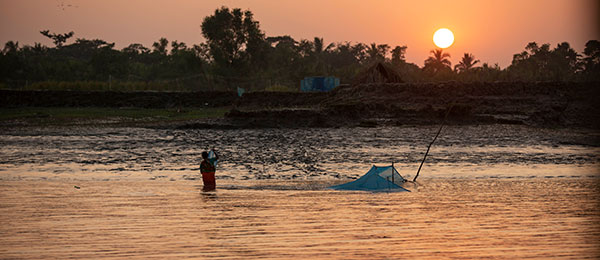
Fisherfolk rely on the waters of the Sundarbans, near the Rampal coal power plant site, for their livelihoods.
Rooppur nuclear power plant: a disaster in the making
“Rooppur came out as an alternative. Now we know what nuclear plants can do. We know the disasters that could happen if there is any kind of malfunctioning, if there is any kind of accident. The disaster is beyond imagination. And it lasts forever, for generations and generations.”
- Khushi Kabir, Nijera Kori NGO.
The idea for the Rooppur nuclear power plant first materialised in the 1960s, and although it was forgotten after independence, the project resurfaced in the 1970s with the support of the then Soviet Union. In recent years, Rooppur has appeared as an alternative energy supply for Bangladesh, whose gas reserves were found to be smaller than originally thought.
The project is attracting a lot of money, including funding and technology from Russia and a USD 14 billion loan from India. The promise of jobs, energy and military security is already fizzling out as the power plant would be managed by India, proving once more that whilst all the risks are borne by the local population, they will receive none of the benefits.
The nuclear plant is also planned in a densely populated area, where any accident would have unimaginable consequences. The construction site has already been the scene of injuries to workers as the government rushes to meet deadlines despite the global Covid-19 pandemic, increasing the potential for accidents once the power plant goes into operation.
Barapukuria coal power plant: the curse of fly ash and water scarcity
In the Dinajpur province of northern Bangladesh, the Barapukuria coal power plant has casted devastation on local communities and ecosystems for decades.
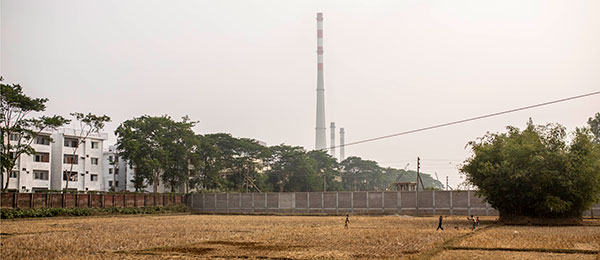
The Barapukuria coal power plant looms over East Dudhipur village, spreading its toxic pollution in all directions.
The acquisition of land to build the power plant started back in 1995, and the coal mine started operating in 2005. It produces 4000-5000 tonnes of coal per day, of which 2000 tonnes is used by the power plant and the rest is sold to brick kiln operators. Both the coal mine and power plant are now being expanded, which will only exacerbate the problems caused for local communities.
The coal-based power plant developments have resulted in fly ash pollution and water scarcity, causing extensive health problems and destroying the land. The promise of jobs and energy for the communities quickly evaporated, giving way to the ravaging of lives and livelihoods, with hundreds still awaiting compensation for the irreversible impacts.
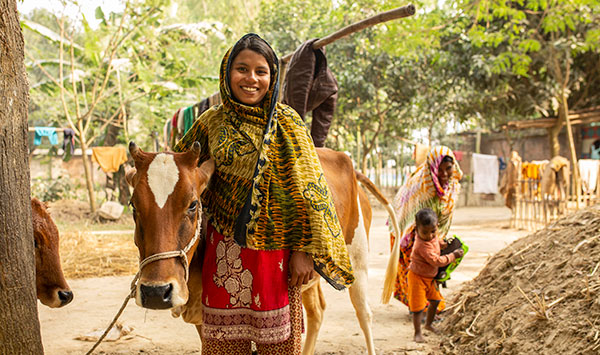
Village life in the East Dudhipur village, in the shadow of the Barapukuria coal power plant.
Bangladesh Environmental Lawyers Association (BELA/ Friends of the Earth Bangladesh) and Friends of the Earth International went to East Dudhipur village to learn about the impacts that the community faces.
Villagers from East Dudhipur told us that fly ash dust emitted by the coal plant causes health issues, with skin and eye conditions impacting even the youngest. The nearest doctor is 10 km away in Phulbari, making access to health care even more difficult. The fly ash also depletes the fertility of the agricultural land upon which communities depend for their survival.
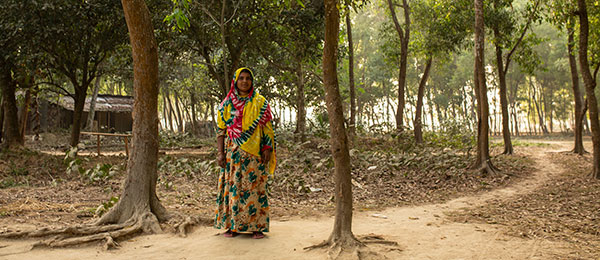
Rokshana Parveen of East Dudhipur village explained how the coal power plant has harmed the villagers:
“When the ashes start raining down, we can’t bring our children out, take our cattle out to the pasture, dry our laundry. Due to the airborne ash, we are sustaining eye injuries, hair loss, and skin rashes. Our fruit orchards are suffering. Nothing is growing anymore. We are the sufferers.”
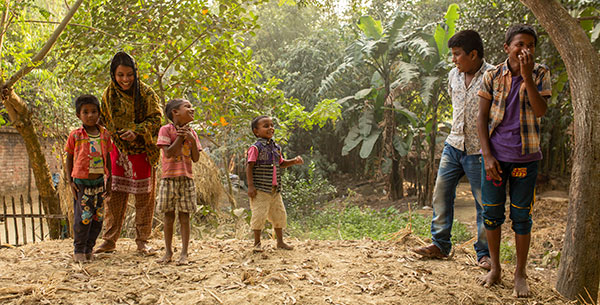
Children playing in East Dudhipur village.
Local communities - especially women - are also hugely affected by irreversible impacts of the coal plant development on their access to water. The plant requires huge amounts of groundwater, resulting in water scarcity for the villagers. Small ponds that communities here relied on for water - locally known as ‘pukur’, and commonly found across all Bangladesh - have now dried up. Now people have to survive on water piped into the area for one hour per day. Both the surface water and the piped water are contaminated and acidic.
Complaints, rallies and protests by local communities remain unheard by the Government, with the extension of the mine and power plant only giving prospects of more destruction and loss for them. Beyond demanding compensation and restoration for themselves, the local communities here want this to serve as an example of the disastrous impacts of coal mining and coal-based power generation, to avoid repeating the same mistakes in Rampal where local communities as well as the pristine Sundarbans forest are at risk.
“We have heard that there is going to be another thermal power plant in Rampal. We have suffered due to our area's thermal power plant, and they are going to face a similar fate. We don’t want that.”
- Rafiqul Islam, a villager from East Dudhipur.
Sundarbans forest: the protective Mother
“We have seen in major storms like Sidr and Aila, Sundarbans has protected us. Sundarbans is like our mother and we need to protect her.”
- Shikha Halder, Chila union, Sundarbans.
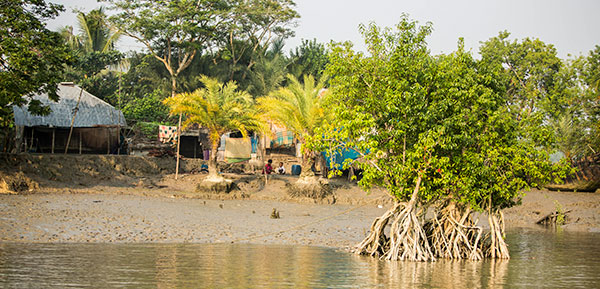
The biodiverse beauty of the Sundarbans ecosystem, neat Laudob village.
The Sundarbans forest, the world’s largest coastal mangrove forest, stretches across 10,000 square km on the coast of Bangladesh and India. Its name literally means “beautiful forest” in the Bangla language. A UNESCO world heritage site and Ramsar site, it is recognised as a wetland area of international importance, and contains three wildlife sanctuaries.
The mangrove forest has sustained the lives and livelihoods of local communities for generations, with peasants, fisherfolk and honey collectors living harmoniously in this rich ecosystem.
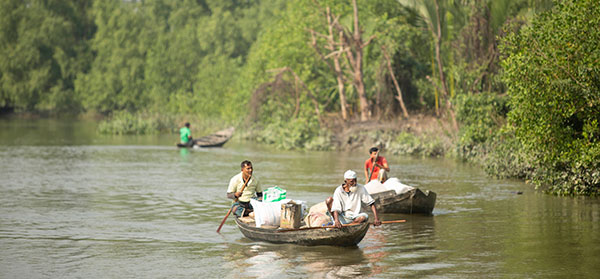
Fisherfolk near Karamjol, Sundarbans.
Khushi Kabir, who works with Bangladeshi non-governmental organisation Nijera Kori to organise landless peasants, remembers:
“I was lucky to have seen it in the earlier years. ‘80, ‘81 I started working there, and seeing the symbiotic nature, relationship between the Sundarbans and its periphery, and the people of the area and how they worked.”
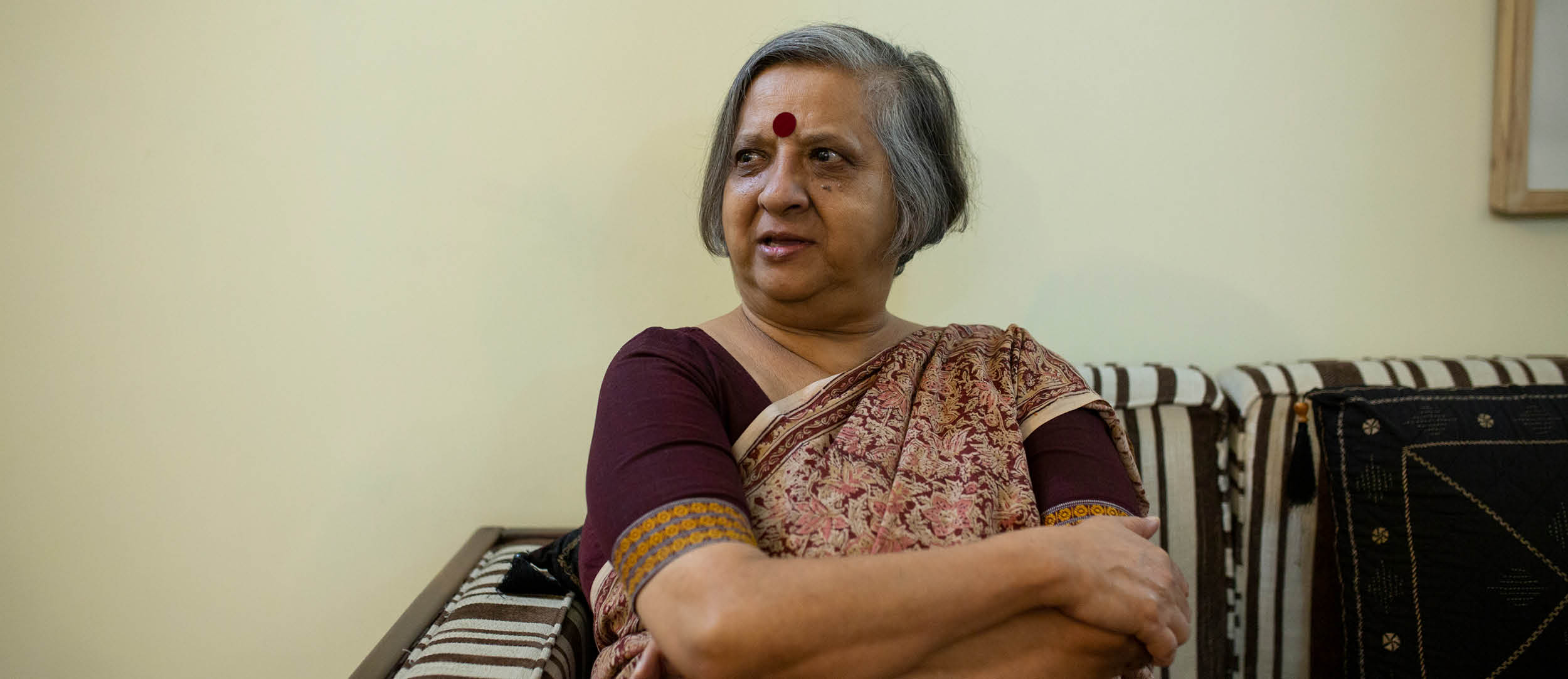
Khushi Kabir at home in Dhaka.
In a country which is amongst the most vulnerable to climate impacts, the Sundarbans provide crucial shelter, acting as a natural carbon sink as well as a protective barrier from cyclones, storms, and tsunamis.
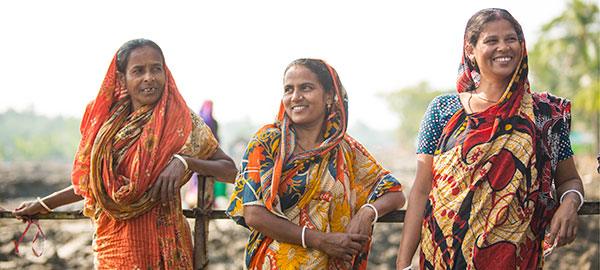
Smiling women in Laudob village, Sundarbans.
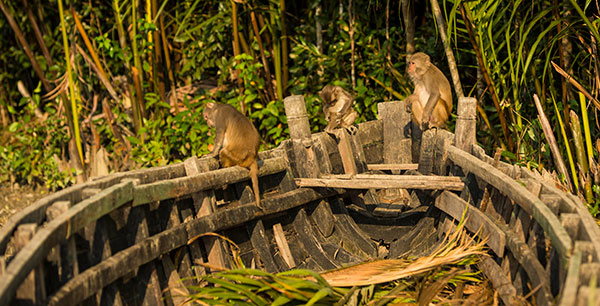
Monkeys in the Sundarbans.
This symbiotic relationship between people and forest has been eroded by the growing industrialisation of the area, including the unimaginable threat of a coal-based power plant in one of Bangladesh’s most biodiverse areas.
“What is happening now with the power plant and the subsequent industrialisation of a very fragile area - fragile both ecologically but also in terms of people’s lives and livelihoods - is the destruction of an entire system in the name of development.”
- Khushi Kabir, Nijera Kori NGO.
In the village of Laudob, the community has maintained and lived with the ecosystem for many years, caring for the forest and the wildlife that is sustaining their lives and livelihoods generation after generation. The devastation resulting from the industrialisation of the area is already casting a shadow here. Industrial fisheries have brought with them road building and land excavation, impacting livelihoods.
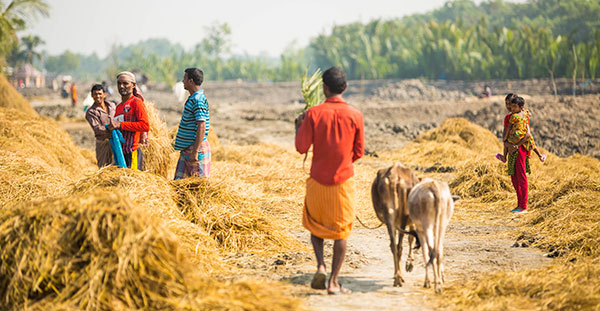
People going about their daily work of threshing the grain and tending to their animals, Laudob village, Sundarbans.
Sacrifices in the name of development
“We are against this coal energy. It destroys national resources, animals and health. We have done protests, we even did a human chain. The coal plant is only 14 km away from Sundarbans. Sundarbans will be ruined because of the fly ash and carbon. That’s why we are shouting against it. We require energy but not like this.”
- Adv Mohsin, elderly freedom fighter.
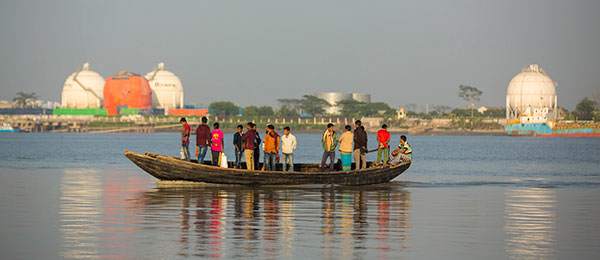
Rampal coal-based power plant construction site, right on the waters of the Sundarbans.
The threat of the Rampal coal power plant has been on everyone’s minds in recent years. Villagers, fisherfolk, local communities and NGOs share the same worries and incomprehension at the prospect of a huge coal power plant in the most fragile and invaluable ecosystem of Bangladesh.
“This project would totally destroy the world’s largest mangrove forest, and take away from millions of people their traditional livelihood sources.”
- Syeda Rizwana Hasan, Chief Executive, Bangladesh Environmental Lawyers Association (BELA).
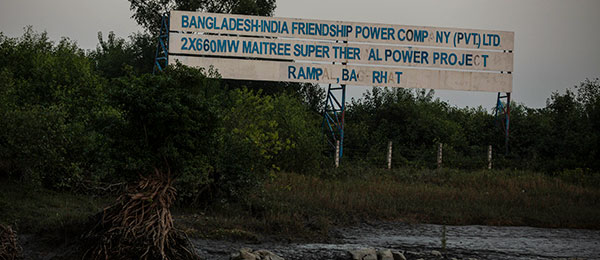
Signboard marking the location of the Rampal power plant, visible from a boat on the waters of the Sundarbans.
The proposed power plant which was due to start operating by the end of 2021 is now delayed further due to the Covid-19 pandemic. The power plant is a joint project of the Bangladesh Power Development Board (BPDB) and the Indian state-owned National Thermal Power Corporation (NTPC). It would require 1834 acres of land and would be located only 14 km north of the Sundarbans, 9 km from the Dhangmari dolphin sanctuary, and 4 km from the Sundarbans Ecologically Critical Area (ECA). It plans to import 4.72 million tons of coal a year which will significantly increase traffic on the Pashur river, with 59 ships per day required to transport the coal.
The land where the plant is projected to be built is a mix of private and government owned land. The latter, called khash land, is meant to support poor and landless peoples. Instead it is being handed over to corporations. This rich, fertile land is used to grow rice, farm shrimp, and sustain the lives and livelihoods of fisherfolk and honey collector communities.
By early 2018, almost 2000 people had already been displaced in the name of development, and those that are left are enduring the impacts of the continued industrialisation of the area.
Israfil Boyati, a fisherman from Dhangmari laments the decrease in fish he has witnessed in his lifetime:
“Chemical effluents from the industries are poisoning the fish, and ships are constantly entering the Sundarbans.”
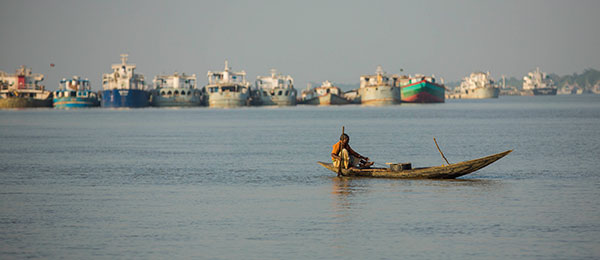
Man on a boat in the waters of the Sundarbans.
Honey collectors have also been driven away from the riverbanks where they used to collect honey. Industrial fumes are pushing the honeybees further inland, and with them the honey collectors, putting them at even greater risk from Bengal tiger attacks.
The government is avidly supporting the Rampal coal power plant project, promising jobs and development in the area, but at what cost?
“You can never recreate the Sundarbans in a thousand years. If Sundarbans is destroyed, who will save us from natural calamities such as the likes of Aila and Sidr? The forest reduces the power of strong storms and gives us shelter, and the trees’ roots keep our land together.”
- Mohammed Nur Alam, Pashur Riverkeeper.
“The biggest problem is the inequality that exists in our structures, and the inequality exists because the people who are most marginalised, who are at the bottom, who are poorest, are the ones who don’t have a voice and don’t have a way of being able to assert themselves.”
- Khushi Kabir, Nijera Kori NGO.
India, the ‘big brother neighbour’, is heavily involved in coal developments in Bangladesh, with Indian state-owned company NTPC being a main industry player for the Rampal project, and India’s Export Import Bank financing 60% of the project. The ties between Bangladesh and India run deep historically, and with Bangladesh’s economy still struggling to take off and plagued by inequality, it is heavily dependent on India economically.
This has enabled India to self-servingly push for coal developments in its neighbouring Bangladesh. Whilst NTPC’s plans to build a coal power plant in close proximity to the Sundarbans on the Indian side was rejected by the government, it has allowed, pushed for, and financially supported the Rampal project in Bangladesh.
Communities fighting these local dirty energy projects in Bangladesh have had to take their fight to the national level, with corruption running deep and the repression of any opposition to what is considered the ‘development’ of the country’s energy means and economy. Community opposition and mobilisation efforts are consistently repressed or ignored.
“The problem is when [international climate finance] comes into our country it goes into corruption issues and the projects don’t get built properly. The message has to be that northern countries first and foremost must stop dirty energy in their countries, then you compensate us for the climate debt.
“Rampal is being called “development” - it's all lies. They say you will have jobs, education, etc. nothing is true.”
- Anu Muhammad, renowned activist and academic.
Communities are, however, ferociously fighting to protect their lives, livelihoods, and the ecosystems on which they depend. Calling for a Sundarbans Protection Law, organising rallies and petitions, they continue resisting the growing industrialisation of the area and its disastrous impacts.
A renewable ray of light in the forest
Communities in the Sundarbans are also showing the way with clean energy solutions that profit people and ecosystems. In the same area of the Sundarbans where Rampal will damage the ecosystem and peoples’ livelihoods, community-based renewable energy is thriving.
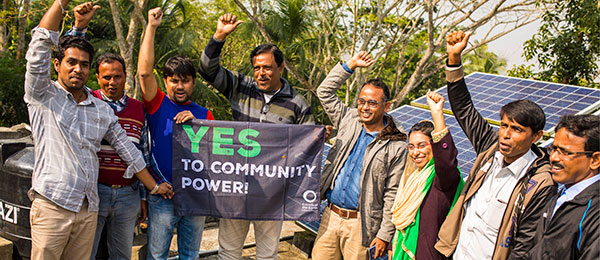
Local government officials and activists celebrate community-led renewable energy. Mr Sudip Kumar Rai (fourth from the left) is the Chairperson of the Banishanta union.
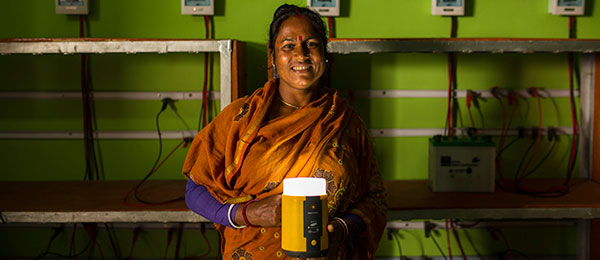
A woman who benefits from the solar power scheme in the Banishanta union.
In the Sundarbans, the forest is lit by an inspiring solar initiative by the Bangladesh Environment and Development Society (BEDS). The organisation worked with local government to create the first solar union in the country, the Banishanta Union. A union is a unit of local government in Bangladesh. BEDS has installed three solar energy stations in the Sundarbans, providing electricity to 17 villages and the union government building.
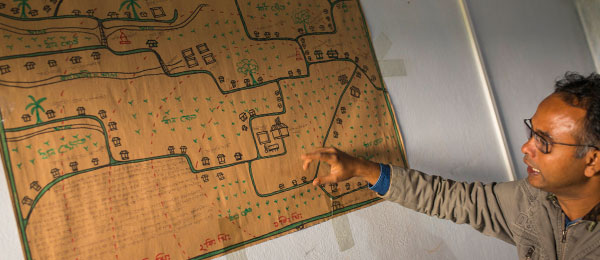
Md. Maksudur Rahman, head of the Bangladesh Environment and Development Society (BEDS), showing a map of homes in the Banishanta union supplied with solar energy.
Of the 3,500 families in the Banishanta union, 3000 either have home solar panels or rent solar batteries from the union building office. Over 4000 students can now read and study at night. These students and 6000 villagers have received education programmes on the importance of solar energy. The solar panels run a photocopy machine, computers and the wifi network. BEDS is planning to work on solar generators next.
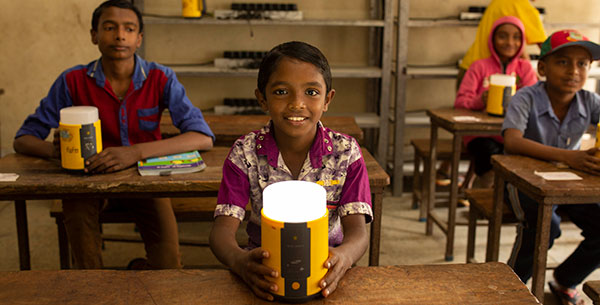
Children showing off their solar lamps which light up their homes at night. They charge the lamps during the day using the solar panels at the Banishanta union building, which also hosts the school.
“We somehow created a social energy grid. As the village is not electrified, children everyday bring their batteries and lamps to school and charge them on our central solar system. They go home with full batteries and bring light and energy to their families which enables them to read and study in the evening, but also lets other family members cook and work. Children are the ones that light up villages around the region at night.”
- Maksudur Rahman, BEDS.
BEDS has also set up an Eco-Village nearby, a grassroots initiative which supports the community with ecologically-friendly housing, business, energy and eduction. This includes drinking water and clean cooking stoves, and training on ecologically-friendly farming and fishing. The initiative boosts the use of clean, sustainable energy whilst preserving local ecosystems.
The results are inspiring. There has been a marked decrease in the use of kerosene and villagers feel safer at night thanks to better lighting. Many have started small businesses using the solar electricity, and in turn, incomes are increasing. One school that until recently had no electricity, could even now have a multimedia class. Around 5500 people get safe drinking water from solar-powered water purification systems, which has meant a reduction in the rate of waterborne diseases. This is especially beneficial to women who usually have to travel long distances to collect safe drinking water for their families.
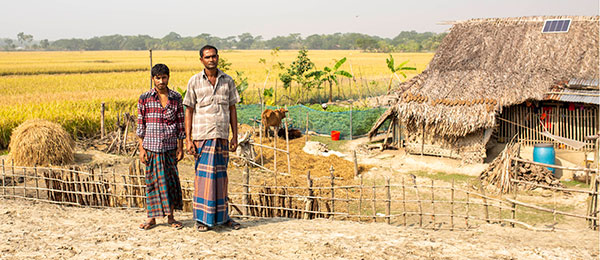
Villagers displaying their rooftop solar panel in the Banishanta solar union Eco-Village, Sundarbans.
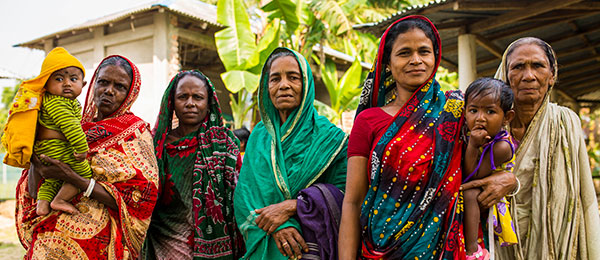
Women from the Banishanta solar union Eco-Village, Sundarbans.
“For us, education about alternatives is at the centre of our work. We want to become a model village that preserves nature and uses traditional knowledge for a clean future. It’s an initiative to solve the major problems of the Sundarbans coastal community and build an environmentally friendly model village for our own community and future generations.”
- Maksudur Rahman, BEDS.
What the solar initiative and Eco-Village show us here in Bangladesh, is that the solutions to the interconnected climate, social and economic crises exist, and are rooted in our peoples and communities. If we give power back to the people, there is hope for climate justice, for a more harmonious relationship between communities and ecosystems, just like the one that has sustained people in the Sundarbans for decades.
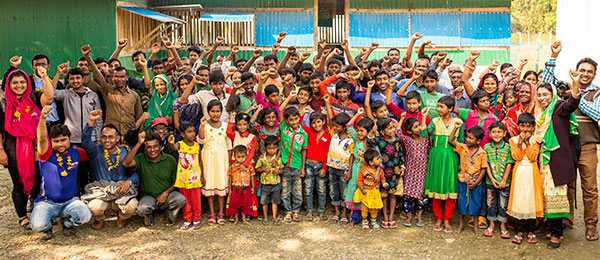
Community meeting in the Eco-Village, East Khejuria village, Sundarbans.
Enter the site